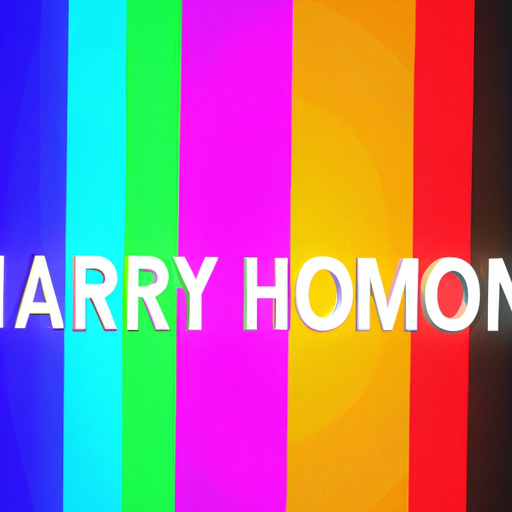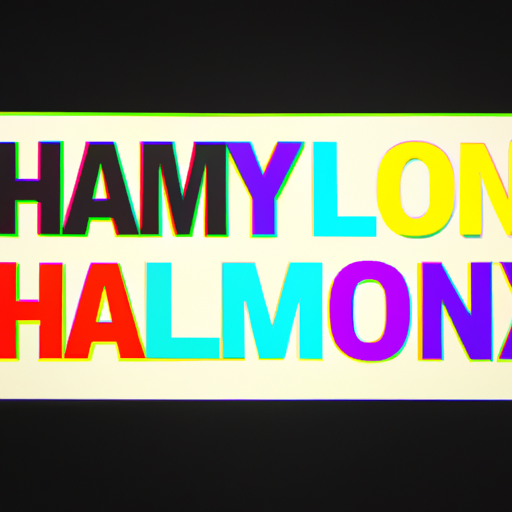
-
Table of Contents
Typography and Graphics: Harmonizing Text and Imagery

Typography and graphics are two essential elements in design that work together to create visually appealing and effective communication. When used harmoniously, they can enhance the overall impact of a design and convey the intended message more effectively. In this article, we will explore the importance of harmonizing typography and graphics, discuss best practices, and provide examples of successful integration.
The Power of Typography
Typography plays a crucial role in design as it not only conveys the message but also sets the tone and mood of the content. The right choice of fonts, sizes, and spacing can evoke emotions, create hierarchy, and guide the reader’s attention. Here are some key considerations when working with typography:
- Font Selection: Choosing the right font is essential to ensure readability and convey the desired message. Serif fonts, such as Times New Roman, are often associated with tradition and formality, while sans-serif fonts, like Helvetica, are more modern and clean. Display fonts can add personality and uniqueness to a design, but they should be used sparingly and in appropriate contexts.
- Hierarchy: Establishing a clear hierarchy is crucial to guide the reader’s attention and emphasize important information. This can be achieved through variations in font size, weight, and style. For example, using a larger and bolder font for headings and subheadings can make them stand out and create a visual hierarchy.
- Spacing: Proper spacing between letters, words, and lines is essential for readability. Too little spacing can make the text appear cramped and difficult to read, while too much spacing can create a disjointed and unbalanced look. Adjusting the tracking, leading, and kerning can help achieve optimal spacing.
The Role of Graphics
Graphics, including images, illustrations, and icons, are powerful visual elements that can enhance the message and evoke emotions. They can provide context, break up text-heavy content, and create a more engaging experience for the viewer. Here are some best practices when incorporating graphics:
- Relevance: Graphics should be relevant to the content and support the message. They should not be used merely for decorative purposes but should add value and enhance understanding. For example, using an image of a happy family in a brochure for a family vacation package can evoke positive emotions and create a connection with the target audience.
- Quality: High-quality graphics are essential to maintain a professional and polished look. Blurry or pixelated images can detract from the overall design and diminish the impact of the message. It is important to use high-resolution images and illustrations that are suitable for the intended medium.
- Consistency: Consistency in style and tone is crucial when using graphics. They should align with the overall design aesthetic and complement the typography. For example, if the typography is clean and modern, the graphics should also have a similar style to maintain visual harmony.
Harmonizing Typography and Graphics
When typography and graphics are harmonized effectively, they can create a cohesive and visually appealing design that effectively communicates the intended message. Here are some strategies to achieve this harmonious integration:
- Contrast: Contrast between typography and graphics can create visual interest and help guide the viewer’s attention. For example, using a bold and large heading with a simple and minimalistic graphic can create a striking contrast that draws the eye.
- Alignment: Aligning typography and graphics can create a sense of unity and organization. They should be visually connected and positioned in a way that complements each other. For example, aligning a headline with an image can create a strong visual connection and reinforce the message.
- Color: Color is a powerful tool that can be used to harmonize typography and graphics. Using a consistent color palette that complements both elements can create a cohesive and visually pleasing design. For example, using a color from the graphic as an accent color in the typography can create a visual connection.
Case Studies
Let’s explore some real-world examples of successful integration of typography and graphics:
Apple
Apple is known for its clean and minimalist design aesthetic, which is reflected in its use of typography and graphics. The company often uses simple and bold typography that aligns with its sleek product design. The graphics used in Apple’s marketing materials are carefully chosen to complement the typography and create a cohesive visual experience.
Nike
Nike is another brand that effectively harmonizes typography and graphics. The company’s iconic “Just Do It” slogan is often paired with bold and dynamic typography that conveys a sense of energy and motivation. Nike’s graphics, such as action shots of athletes, complement the typography and reinforce the brand’s message of athleticism and determination.
Conclusion
Typography and graphics are powerful design elements that, when harmonized effectively, can create visually appealing and impactful communication. By carefully selecting fonts, establishing hierarchy, and considering spacing, typography can set the tone and guide the reader’s attention. Graphics, on the other hand, can provide context, enhance understanding, and evoke emotions. When typography and graphics are aligned in terms of relevance, quality, and consistency, they can create a cohesive and visually pleasing design. By utilizing strategies such as contrast, alignment, and color, designers can achieve a harmonious integration of typography and graphics. Successful brands like Apple and Nike serve as excellent examples of how typography and graphics can work together to create a strong and memorable visual identity. By understanding the importance of harmonizing typography and graphics, designers can create more impactful and engaging designs that effectively communicate the intended message.
